Spiroergometry
"The gold standard" in assessing physical fitness
Spiroergometry allows the assessment of sports readiness levels, exercise programming according to goals, and progress monitoring.
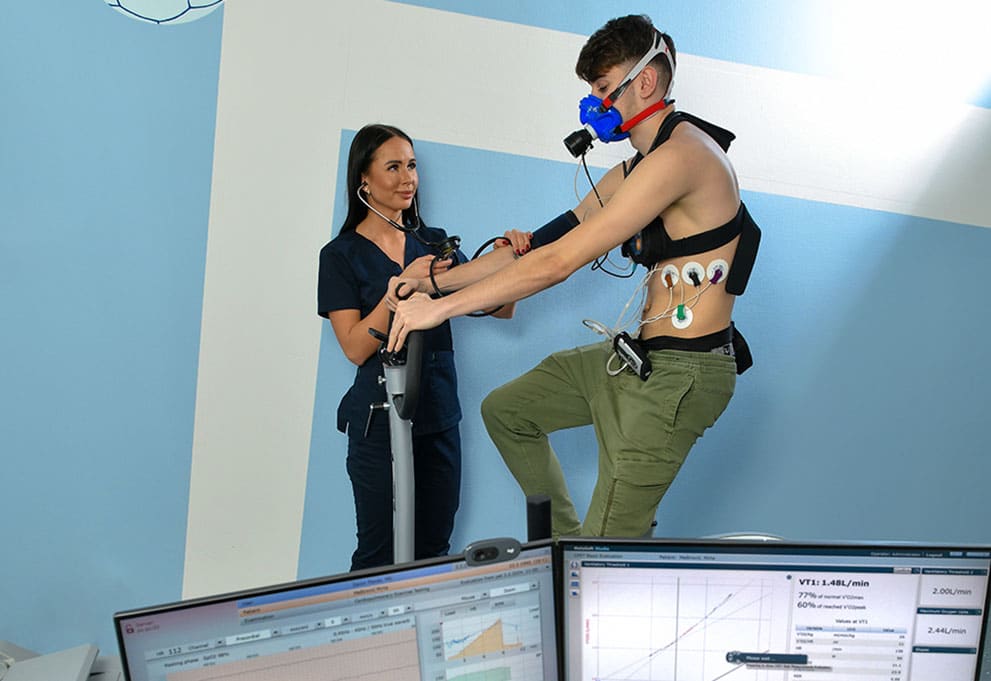
The most accurate assessment of fat metabolism during physical activity
Individually direct measurement of fitness for proper training planning
Identification of health risks and other limitations of physical exertion
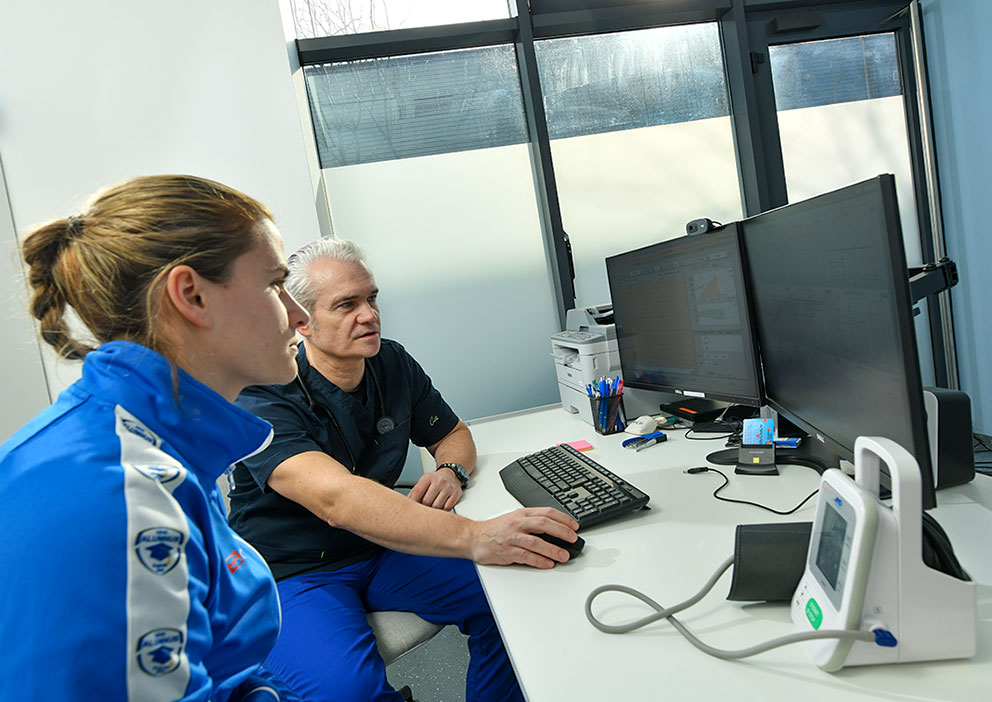
Why spiroergometry?
The test is intended for athletes, recreational exercisers, individuals planning to lose weight, those who want to assess the risk of physical activity for their health, and for selecting appropriate sports activities or sports, for both adults and children.
The test is intended for athletes, recreational exercisers, individuals planning to lose weight, those who want to assess the risk of physical activity for their health, and for selecting appropriate sports activities or sports, for both adults and children.
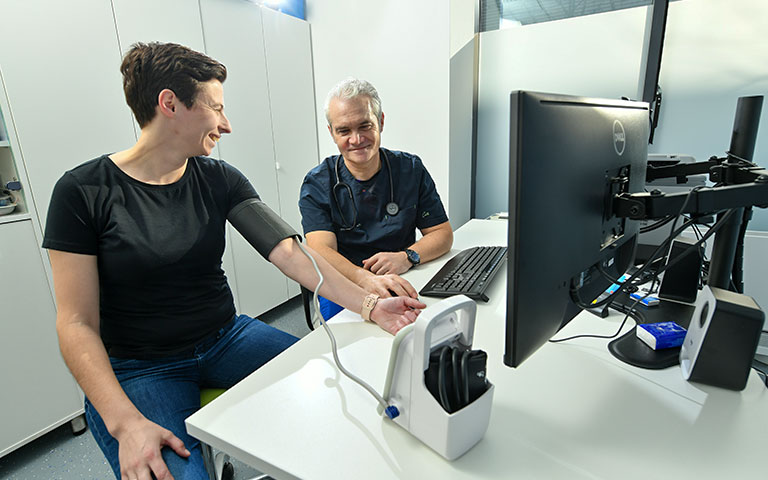
Spiroergometry enables:
Measurement of basal metabolism
Measurement of lung function at rest, during physical exertion, and recovery
Measurement of heart function at rest, during physical exertion, and recovery
Planning of sports activities according to training or exercise goal
Indirect calorimetry – important for assessing appropriate physical activity for weight loss
Determining the risk of physical activity for health
Examination price: 130 €
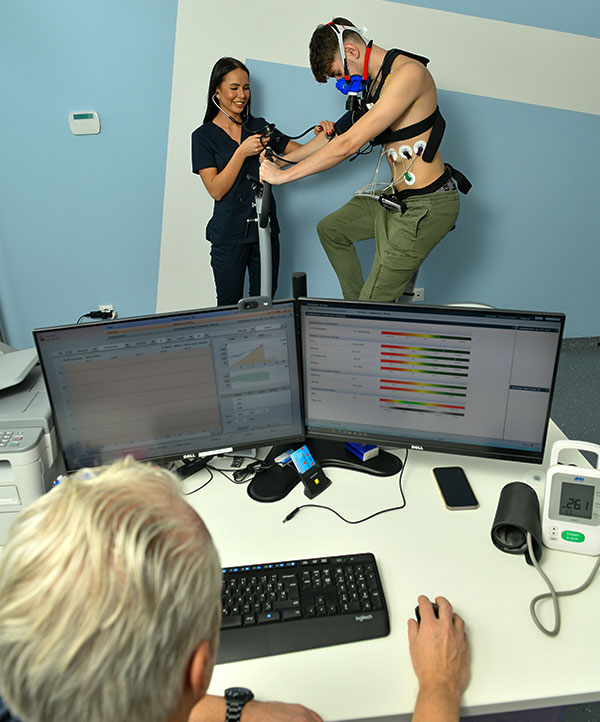
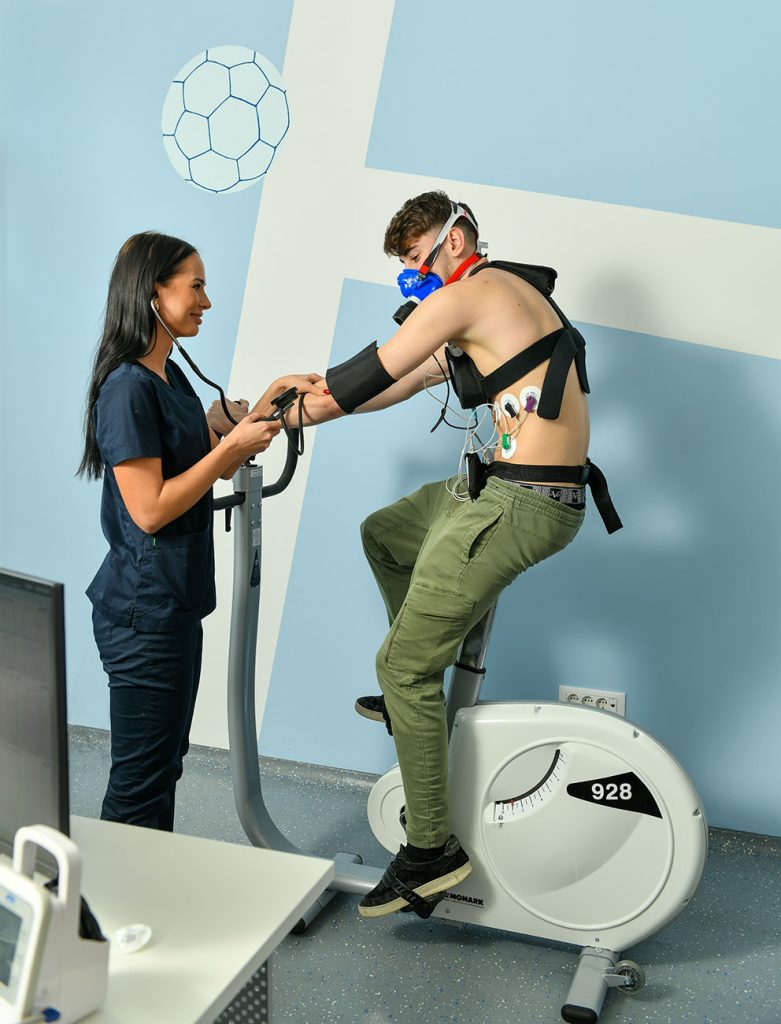
Planning weight loss
Spiroergometry is especially important in planning weight loss because it provides the most accurate assessment of fat metabolism during physical activity, enabling individuals who plan or undertake weight loss to choose the right activities to support weight loss, select the proper intensity and duration of activities, as support nutritional counseling.
Fitness assessment
Fitness assessment is particularly important for professional athletes and recreational enthusiasts because training zones determined based on charts or applications, including smart watches or wristbands, are only approximate and not individually accurate! For proper training planning, direct measurement of fitness through spiroergometry is crucial due to significant individual differences.
Determining health risks
It is particularly important in determining health risks and other causes of physical exertion limitations because tests conducted at rest or field tests cannot identify these factors.
Frequently asked questions
Bring sports equipment, a sports top for women, and sneakers.
Do not eat 2 hours before testing. Prior to that, have a light meal (do not come fasting).
The testing (spiroergometry) consists of taking medical history, determining the indication for examination, clinical examination, resting ECG, spirometry (lung function) at rest, blood pressure measurement, heart rate, oxygen saturation, selection of testing protocol, brief education on testing procedure, exercise testing with monitoring of a 12-lead ECG, pulmonary function monitoring, measurement of oxygen consumption and CO2 production, and blood pressure monitoring.
If the indication for testing is exercise-induced asthma, exercise-induced urticaria, or exercise-induced anaphylaxis, lung function (spirometry) is measured every 5 minutes for half an hour after exertion.
After completing the test, data analysis is conducted and a report is issued.
Testing is repeated depending on the goals of the testing (if changes in findings are expected). Changes in findings can be expected due to therapeutic, rehabilitation, or sports interventions, and depending on the program conducted, the test may be repeated after 3, 6, or 12 months. Additionally, the test is repeated in case of unexpected loss of functional abilities.
- Evaluation of dyspnea (shortness of breath)
- Differentiation of cardiac, pulmonary, and peripheral limitations from other causes
- Detection of exercise-induced bronchoconstriction (exercise-induced asthma)
- Assessment of desaturation during exertion
- Rehabilitation
- Exercise intensity/prescribed exercise (e.g., in weight loss programs)
- Exercise response
- Pre-operative assessment and risk stratification
- Prognosis of expected lifespan (survival)
- Assessment of temporary or permanent disability and impairment
- Fitness assessment
- Diagnostic purposes
- Assessment of response to therapy (pharmacological and non-pharmacological measures)
- Recent heart attack or stroke within 3 months
- Unstable angina
- Unstable arrhythmia
- Acute endocarditis, myocarditis, pericarditis
- Syncope
- Severe, symptomatic aortic stenosis
- Uncontrolled chronic heart failure
- Acute pulmonary embolism, deep vein thrombosis
- Respiratory insufficiency
- Uncontrolled asthma
- SpO2 <88% in room air
- Acute non-cardiopulmonary condition that may significantly worsen or be worsened by exertion
- Significant psychiatric/cognitive disorder limiting cooperation
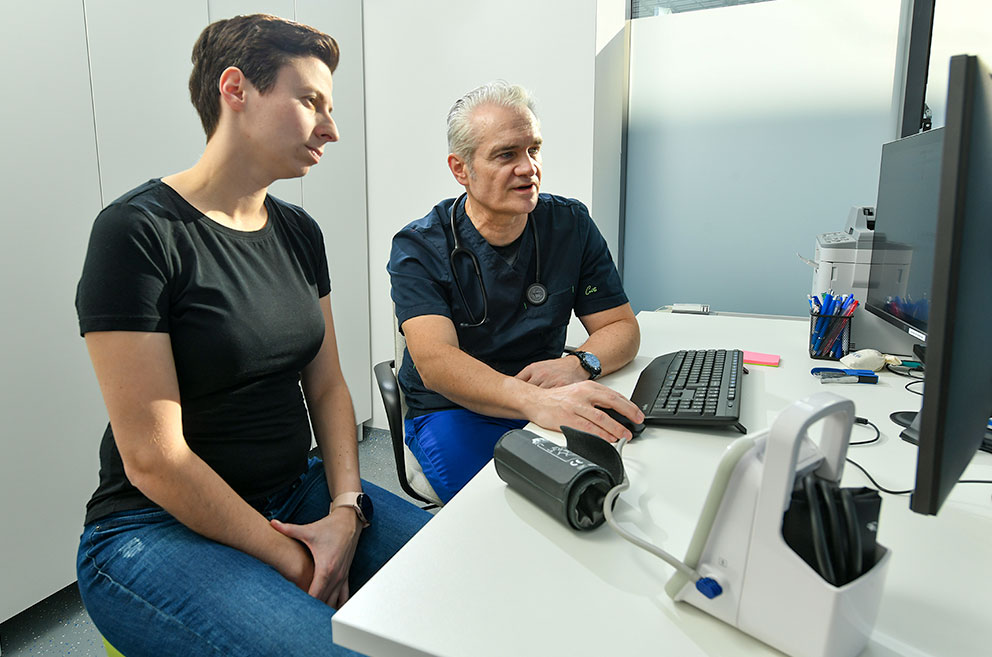
Spiroergometry is rightly considered the "gold standard" in assessing physical fitness:
The most accurate estimation of fat metabolism during physical activity
Individual direct measurement of fitness for proper training planning
Determining health risks and other limitations of physical exertion